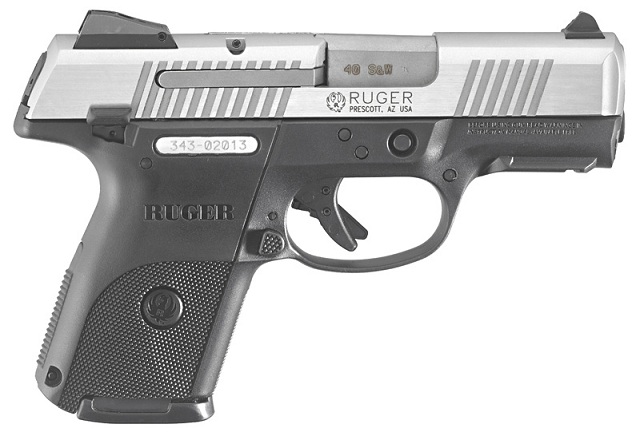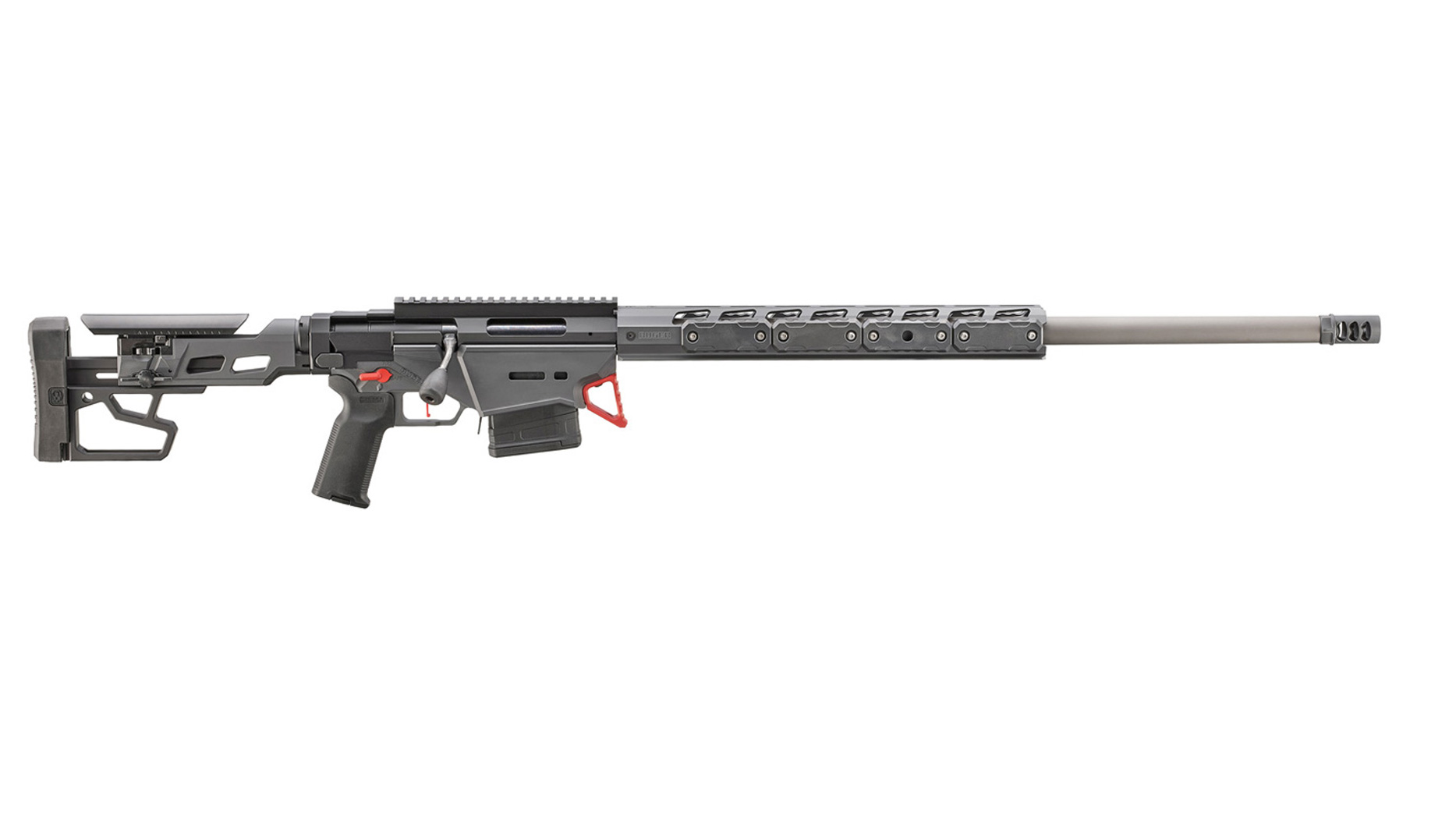
Unfortunately, there's anything but a consensus regarding the 9 mm's virtues for self-defense. We've all been subjected to the infinite number of rhymes, jingles and alleged pearls of wisdom from anonymous authors who claim it's risky to bet your life on entry wounds that fall short of a .40-inch diameter.
Ruger didn't become an industry leader by ignoring consumers, and its SR40 is the ideal therapy for shooters who cower at the thought of thin-at-the-waistline bullets, yet yearn for the ergonomics and reliability of the SR9. Chambered in .40 S&W, few would argue the SR40 lacks sufficient firepower to end a gunfight. (More detailed photos of the SR40 are available here.)

The handgun is 7.55 inches long, width is 1.27 inches and height is 5.52 inches—identical to the dimensions of the SR9. Obviously, Ruger knew shooters were enamored with its predecessor's feeland handling.
What did change in the SR40, other than the chambering, is its overall weight. The handgun is an ounce heavier—welcome heft when shooting stouter loads, but hardly anything to complain about when carrying.
One of the real innovations in most of today's polymer-framed pistols is interchangeable backstraps. They've transformed occasional shooters into range regulars simply by providing enhanced comfort. But, once you've found the right size and installed it, what do you do with the other two, three or baker's dozen?
Room is limited in a gun safe and keeping spare backstraps in the case means you've got to remember underneath which bed you shoved it when your smaller-handed, sticky-fingered cousin from West Virginia suddenly has a hankerin' to go with you to the range.
Ruger's SR40 comes with a single, soft, rubbery backstrap that can be changed from a rounded profile to a flat one—alleviating those missing parts and space concerns. To alter the profile, simply drive out the drift-pin, slide the backstrap straight down and off the grip, turn the insert over and reverse the process to reinstall. No, you don't have three sizes to choose from, but I found the rounded option ideal, and when I turned it to the flat side, it wasn't all that bad, either. Reversing the pliable backstrap took less than a minute—much faster than mortal combat with the dust bunnies beneath my bed.
Left-handed shooters will appreciate the ambidextrous safety levers and magazine release. Oddly, the left side of the test gun had a white dot to indicate "safe," but the same wasn't true on the right side. Disengaging the safety exposes a red dot on both sides of the slide and was easy with either my left or right hand, but the opposite wasn't true. Their low profile—a good thing for concealed carry and presentation—forced me to adjust my shooting grip to re-engage the safety.

Field-stripping the pistol was fast, easy and with a captive recoil spring, I wasn't crawling around the floor looking for critical components. A loaded-chamber indicator is another of the gun's touches that make it user friendly, and Ruger's version on the SR40 isn't boisterous enough to clutter the gun's looks, yet it's tall enough to provide a tactile reference under stress and in the dark.
The same can't be said for the striker-status indicator. In a clean, well-lit place, you can see the button, but trying to determine its status in the dark or under duress will be a challenge.
The SR40's three-dot sights were easy to acquire and worked extremely well. Serrations at the back of the front sight effectively reduce glare and their profile ensures fast presentation. Its front sight is dovetailed into the slide and is drift adjustable for windage. Similarly, the rear sight can be adjusted for both windage and elevation.
A dustcover rail allows installation of a variety of aftermarket accessories, making the pistol ideal for self-defense.

In testing, the SR40 preferred heavier loads, with both 180-grain offerings from Winchester and DoubleTap averaging 1.8 inches at 15 yards. The trigger stacked a little—like most striker-fired handguns—but broke predictably and was very manageable. Recoil was more than simply tolerable. Aside from the effects of added weight, the curved backstrap really cushioned the hand against perceived recoil.
If you love the ergonomics and performance of the SR9, but subscribe to the dozens of yarns about the 9 mm in a self-defense role, take a close look at the SR40. Chances are you'll like what you see, especially if you get a chance to shoot it.






































